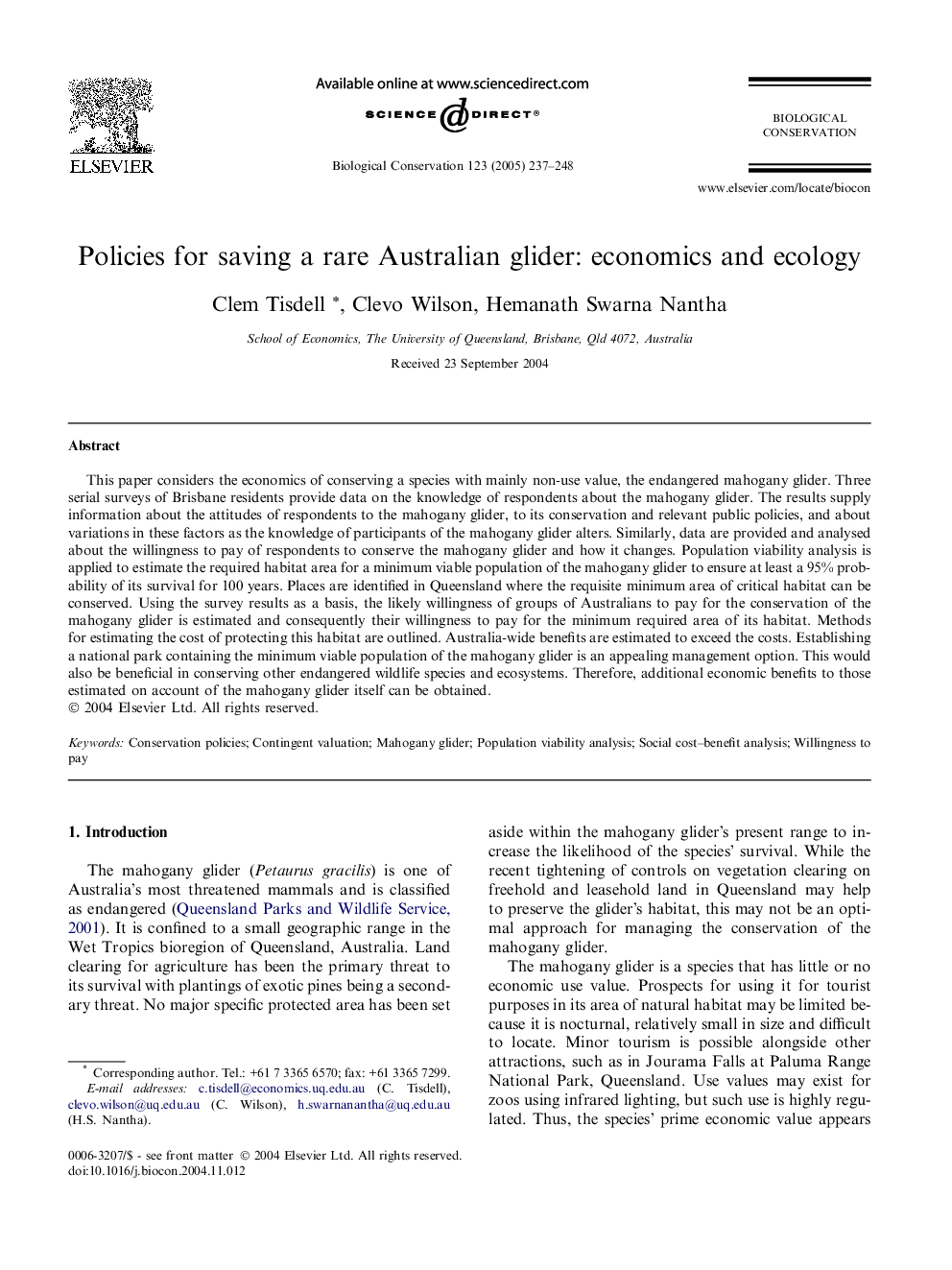| کد مقاله | کد نشریه | سال انتشار | مقاله انگلیسی | نسخه تمام متن |
|---|---|---|---|---|
| 9446204 | 1304654 | 2005 | 12 صفحه PDF | دانلود رایگان |
عنوان انگلیسی مقاله ISI
Policies for saving a rare Australian glider: economics and ecology
دانلود مقاله + سفارش ترجمه
دانلود مقاله ISI انگلیسی
رایگان برای ایرانیان
کلمات کلیدی
موضوعات مرتبط
علوم زیستی و بیوفناوری
علوم کشاورزی و بیولوژیک
بوم شناسی، تکامل، رفتار و سامانه شناسی
پیش نمایش صفحه اول مقاله

چکیده انگلیسی
This paper considers the economics of conserving a species with mainly non-use value, the endangered mahogany glider. Three serial surveys of Brisbane residents provide data on the knowledge of respondents about the mahogany glider. The results supply information about the attitudes of respondents to the mahogany glider, to its conservation and relevant public policies, and about variations in these factors as the knowledge of participants of the mahogany glider alters. Similarly, data are provided and analysed about the willingness to pay of respondents to conserve the mahogany glider and how it changes. Population viability analysis is applied to estimate the required habitat area for a minimum viable population of the mahogany glider to ensure at least a 95% probability of its survival for 100 years. Places are identified in Queensland where the requisite minimum area of critical habitat can be conserved. Using the survey results as a basis, the likely willingness of groups of Australians to pay for the conservation of the mahogany glider is estimated and consequently their willingness to pay for the minimum required area of its habitat. Methods for estimating the cost of protecting this habitat are outlined. Australia-wide benefits are estimated to exceed the costs. Establishing a national park containing the minimum viable population of the mahogany glider is an appealing management option. This would also be beneficial in conserving other endangered wildlife species and ecosystems. Therefore, additional economic benefits to those estimated on account of the mahogany glider itself can be obtained.
ناشر
Database: Elsevier - ScienceDirect (ساینس دایرکت)
Journal: Biological Conservation - Volume 123, Issue 2, May 2005, Pages 237-248
Journal: Biological Conservation - Volume 123, Issue 2, May 2005, Pages 237-248
نویسندگان
Clem Tisdell, Clevo Wilson, Hemanath Swarna Nantha,